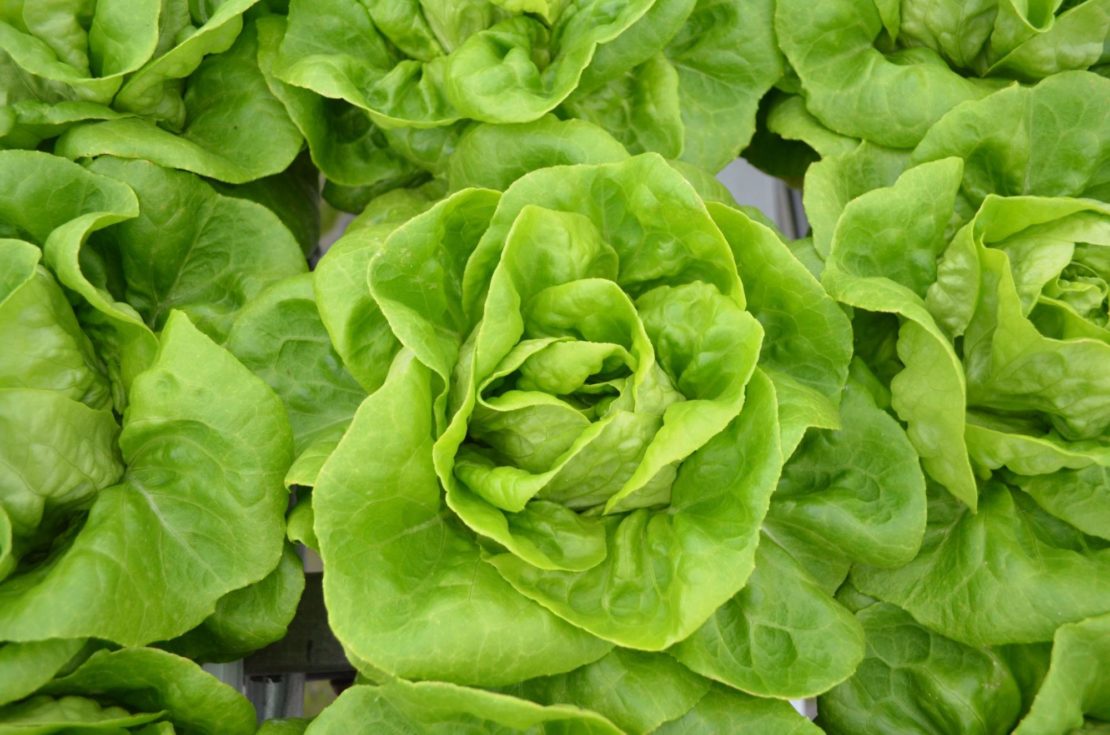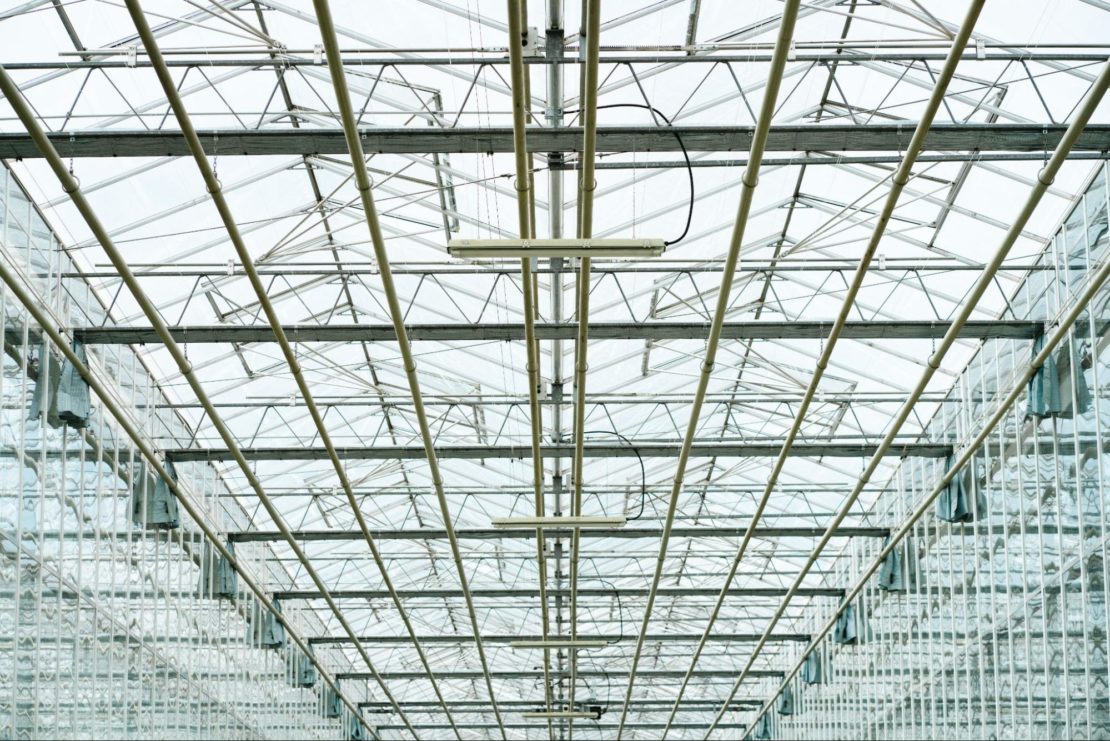Growing loose leaf lettuce in your commercial greenhouse can be a great way to build your skills and test how smoothly your operation runs. After you try your hand at commercial lettuce production, growing more challenging plants may be easier to manage. Lettuce plants are leafy vegetables that thrive in a more chilly environment when compared to many other plants. Because these leafy greens can handle cooler temperatures better than most others, it can also be a great choice to grow them in the winter months when your operation may be less hectic.

There are many different varieties of lettuce that can be grown commercially in a greenhouse. Lettuce can come in a medley of colors, textures, and sizes. Lettuce is full of dietary fiber and contains other nutrients and vitamins like Vitamins K, A, and C. As the staple of many salads, sandwiches, and more, having lettuce in your commercial greenhouse allows your business the opportunity to cultivate a highly versatile and easily sellable product.
The Challenges Of Growing Lettuce Commercially In A Greenhouse
Temperature Consistency
Most lettuce varieties thrive when temperatures remain consistently between 50 to 70 degrees Fahrenheit. When dealing with warmer temperatures, it is crucial to ensure your lettuce greenhouse temperature does not increase rapidly. Sometimes, commercial equipment is required for proper temperature stabilization. Another way to cool your greenhouse is to ensure the soil is damp, as dampened soil allows for better temperature distribution.
Dealing with temperatures that are too cool is a bit more challenging. While most types of lettuce can withstand short bouts of cold temperatures (especially in a commercial greenhouse), they will stress and have trouble growing if exposed to the cold for too long. Utilizing commercial heating equipment in your greenhouse may be necessary if you’re dealing with consistently cool temperatures.

Proper Watering
When commercially growing lettuce in a greenhouse, watering is an important aspect. Lettuce often has different watering requirements at each stage of plant development, from seedling to harvesting. In the early stages of the growing season, using a light mist to water your lettuce can reduce the risk of moving and disturbing lettuce seeds and roots. Because lettuce is a quick-growing vegetable, it may require more water than you realize. A good rule of thumb is that your lettuce should receive the equivalent of an inch of rainfall in water each week.
Soil Requirements
Remember that the richer your soil is in nutrients, the more abundantly your lettuce can grow. While other factors also affect your lettuce’s growth, the soil is a factor you can control entirely. If the ground soil in your area is not nutrient-rich, look into purchasing a fertilizer that, when mixed with the soil, can better suit your lettuce’s needs. You should utilize well-draining, loamy soil. If you do not use well-drained soil, you risk rotting your lettuce plant’s roots and other issues.
When you plan on utilizing the ground soil your commercial greenhouse covers, the time of year is crucial to consider as you start your lettuce cultivation operation. While commercial greenhouses can provide control of air temperature, your ground soil also needs to be a workable temperature and consistency before you plant lettuce. A good rule of thumb for sowing seeds in the open air is to start a couple of weeks before the last spring frost date in your area. But with commercial greenhouse lettuce production, you can begin your growing season a few weeks earlier.
Lighting Needs
Greenhouse lettuce grows its best when exposed to natural sunlight for at least six hours a day. To see the best results, ensure that your commercial greenhouse receives ample sunlight year-round.

If lighting is a concern for your operation, you can purchase commercial artificial lighting equipment to help your lettuce thrive. If you’re worried your lettuce is exposed to excessive sunlight, you can also purchase shade cloths and other light refracting equipment.
4 Important Tips For Fruitful Mass Harvesting
- Avoid Overcrowding: Ensure that there is extra space between seeds to avoid overcrowding and a depletion of nutrients in the soil. Sow your seeds in rows, spacing rows about a foot apart. Space your seeds within each row around half a foot apart. For more exact spacing recommendations, look at the variety of lettuce you plan to grow and how large it is expected to be once ready for harvesting.
- Keep Soil Temps Stable: Make sure the temperature of your soil is consistently between 65 and 70 degrees Fahrenheit. Growing lettuce can be much more tricky if your soil temperature is too hot, too cold, or inconsistent.
- Ensure You Have The Equipment You Need: Because commercial heating and cooling equipment may be necessary, ensure your space’s electricity source is stable and consistent. This commercial equipment can be vital if you are interested in year-round commercial lettuce cultivation. Extreme cold and hot temperatures create challenges for commercial growers, but having commercial tools at your disposal can allow you to manage any obstacles easier.
- Keep Pests At Bay: If pests like aphids are a concern for commercial operation, a great way to help control these annoying bugs is to plant garlic or chives nearby. Rather than using pesticides, these plants act as natural repellents.
Let’s Grow!
As a commercial greenhouse owner, you have many different options regarding the type of lettuce you choose to cultivate. Some of the wide varieties of lettuce you could grow include:
Chicarita
A type of head lettuce, Chicarita lettuce is basically miniature romaine lettuce. Chicarita leaves are crunchy and more petite than standard romaine leaves. This variety of lettuce is growing in popularity as it can be highly versatile. Chicarita lettuce typically requires around a month to a month and a half to grow to its full size.
Dorian
Dorian lettuce is a Batavia-type of lettuce, similar to baby leaf lettuce. Dorian lettuce is a bright green color, has high levels of mildew resistance, and is produced in many different seasons. Dorian lettuce is often mixed with other varieties and packaged as a lettuce mix.
Taboo
Another type of head lettuce you could grow is called Taboo lettuce. Taboo lettuce typically has dark red/purple leaves. This variety of lettuce is smooth in texture, has a sweet flavor, and is less crunchy than standard romaine lettuce. You can harvest Taboo lettuce at many different points in its growth cycle, depending on leaf size preference.